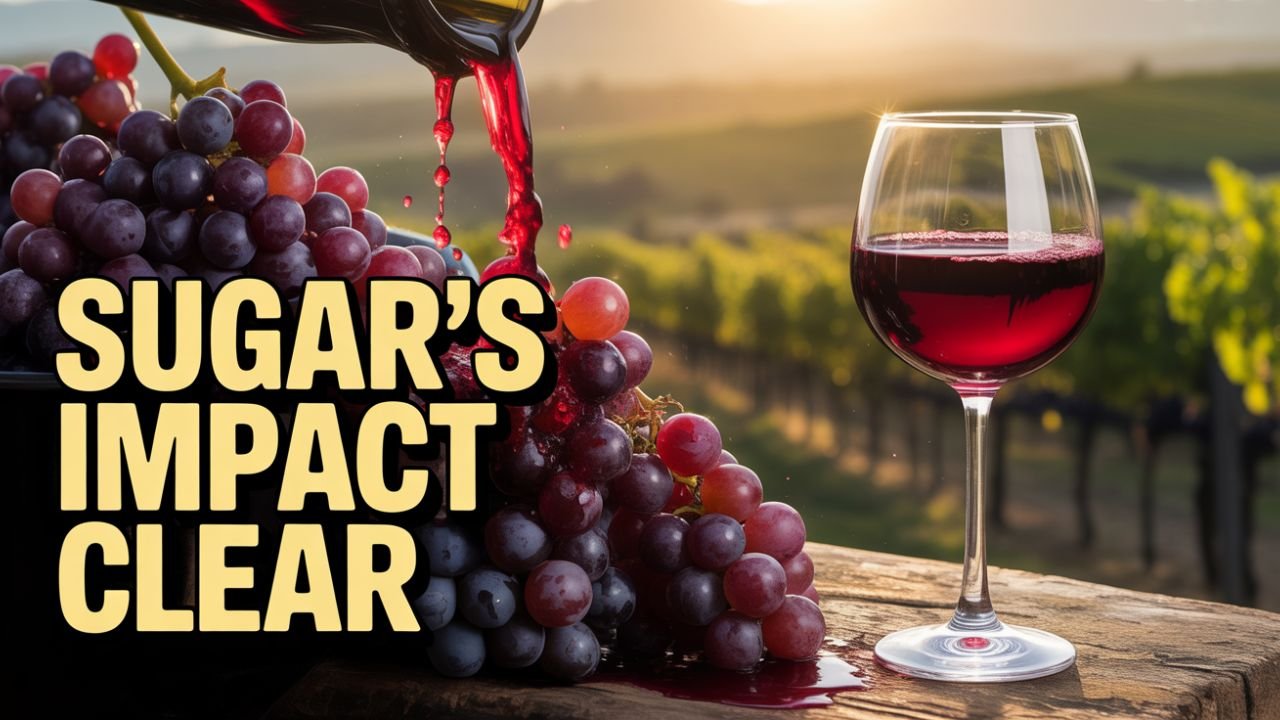People often focus on the flavor and aroma of wine when they enjoy it, but the sugar content also has a profound effect on both health and taste. Whether you are diabetic, on a low-sugar diet, or are just health conscious, it is important to know how much sugar is in your bottle and what type it is.
How much sugar is in wine?
All wines contain some amount of residual sugar, called residual sugar. This is the main source of sugar in wine. The amount of sugar in wine depends on the type of wine you are drinking.
Typically, drawn red and white wines only contain about 1 gram of sugar per 5-ounce serving. For comparison, a typical Coca-Cola can contains about 39 grams of sugar. If you’re looking for wines with less sugar, off-draw and sparkling wines are the best options.
Below is a brief description of the types of wine and the amount of sugar they contain:
| Sweetness | Sugar per bottle | Sugar per glass | Types of wine |
|---|---|---|---|
| Very draw | <1g | <1g | Sauvignon Blanc, Lambrusco (Secco), Champagne (Extra Brut) |
| off-draw | 1-7g | 1-1.4g | Pinot Noir, Chardonnay, Cabernet Sauvignon |
| off-draw | 7-26g | 1.4-5g | Gewürztraminer, White Zinfandel, Chenin Blanc |
| sweet | 26-90g | 5-18g | Sweet Rosé, Pink Moscato, Sweet Riesling |
| Very Sweet | 90-165g | 18-33g | Sauternes, Port, Ice Wine |
The higher the sugar content, the higher the carbohydrates and calories in the wine. If you are on a low-carb diet, choosing a low-sugar wine will be beneficial.
Importance of Sugar in Wine Making
Sugar plays an important role in wine making. It is naturally present in grapes and is converted into alcohol by yeast during the fermentation process.
Most of the sugar in dry red and white wines is converted into alcohol and what remains is called residual sugar. Some winemakers add additional sugar during the fermentation process to balance the taste.
In addition, fortified wines such as port wine and late harvest wines are particularly sweet. Late harvest wines are made from grapes that are left on the vine longer, making them raisin-like sweet.
When a wine’s sugar information isn’t on the bottle
Often wine labels don’t list sugar or nutrition information, only information like the grape blend, the wine’s place of origin, and the vintage.
To make healthy choices, you need to understand wine flavor descriptions and label language. Wines labeled “dessert” are usually sweet, while “draw” wines are low in sugar.
If you like Champagne, look for the word “brut.” Brut means draw in French. Also, the acidity of a wine can indicate the sugar content. For example, crisp white wines like Sauvignon Blanc are low in sugar.
What sugars are in wine?
Wine naturally contains two types of sugar: glucose and fructose. Fructose is the sweet sugar found in fruits and is sweeter than glucose. In the fermentation process, these sugars turn into alcohol, and what remains is called residual sugar.
Wine vs. Cocktails and Liquor
Dry wines are lower in sugar than some other alcohols, but the sugar in cocktails can add up quickly. For example, a classic margarita has about 12 grams of sugar, and a frozen daiquiri has about 23 grams of sugar.
If you prefer low-sugar cocktails, use calorie-free sodas instead of colas and fruit juices.
Wine and Diabetes
Drinking wine in moderate amounts can be safe for diabetics, provided they keep their blood sugar levels under control. Avoid dessert wines or wines with added sugars.
Red wine contains resveratrol, which is known to have anti-inflammatory properties and provides many health benefits, including diabetes. Non-alcoholic red wines can also be a good source of resveratrol.
Drinking wine on a low-sugar diet
It’s possible to drink wine on a low-sugar diet. Draw red wines are generally best suited for low-carb and sugar diets. Limiting consumption to one glass per day for women and two glasses per day for men is healthy.
An 8-ounce glass of draw wine contains about 1.6–1.8 grams of sugar. If you choose draw wine, a bottle contains about 5 grams of sugar.
Low-sugar, alcohol-free wine
If you’re serious about sugar and health, alcohol-free wine is the safest option. For example, non-alcoholic brut wine has 0 grams of sugar but retains its flavor and bubbles completely.
Low-calorie sparkling rosé wines are also available, which include 1 tsp.They have only 20 calories. This option helps maintain a balance between health and taste.
Understanding the sugar levels of wine is important not only for taste, but also for health. Whether you are diabetic, on a low-sugar diet, or are simply health conscious, choosing the right wine plays an important role in your everyday habits.

